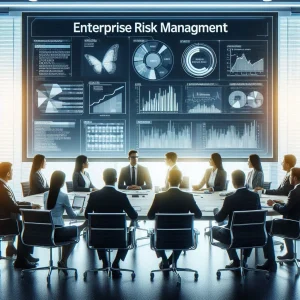Introduction to SOC 2 Audits
In today’s digital landscape, organizations that handle customer data must prioritize security and compliance to maintain trust and protect sensitive information. One of the key frameworks that help organizations demonstrate their commitment to data security is the Service Organization Control 2 (SOC 2) audit.
What is SOC 2?
SOC 2 is a set of compliance standards developed by the American Institute of CPAs (AICPA) specifically for service providers that store customer data in the cloud. It is particularly relevant for technology and cloud computing companies, as it focuses on how these organizations manage customer data based on five trust service criteria: security, availability, processing integrity, confidentiality, and privacy. Achieving SOC 2 compliance not only helps organizations build trust with their clients but also enhances their overall data management practices.
Purpose of SOC 2 Audits
The primary purpose of SOC 2 audits is to assess an organization’s controls related to the aforementioned trust service criteria. During the audit, independent auditors evaluate the effectiveness of these controls to ensure that they are designed and operating effectively. This assessment provides organizations with a comprehensive understanding of their data security posture and identifies areas for improvement. Furthermore, a successful SOC 2 audit can serve as a competitive advantage, as it demonstrates to clients and stakeholders that the organization takes data security seriously.
Understanding SOC 2 Exceptions
As organizations prepare for SOC 2 audits, it is crucial to understand the concept of audit exceptions. Exceptions are instances where a control does not perform as expected or is not implemented correctly during the audit period. These can arise from various factors, including deficiencies in control design, misstatements, or even unintentional omissions. While not all exceptions indicate a failure, they can have significant implications for audit outcomes.
- Types of Exceptions: Exceptions can vary in severity, ranging from minor deviations that may require corrective action to more significant issues that could jeopardize compliance. Common exceptions encountered during SOC 2 audits include deficiencies in control design, lack of stakeholder buy-in, and insufficient communication and education regarding compliance policies [3][6][10].
- Implications of Exceptions: The presence of exceptions can impact an organization’s ability to achieve a clean audit report, which may lead to financial implications, such as fines or loss of business opportunities. Therefore, understanding and addressing these exceptions proactively is essential for organizations aiming to maintain compliance and enhance their data security practices [10][11].
Overview of SOC 2 Trust Services Criteria
When preparing for a SOC 2 audit, organizations must understand the Trust Services Criteria (TSC) that form the foundation of the assessment. These criteria are essential for evaluating the effectiveness of an organization’s controls and ensuring compliance with SOC 2 standards. The five Trust Services Criteria are:
- Security: This criterion focuses on protecting the system against unauthorized access, both physical and logical. It encompasses measures such as firewalls, intrusion detection systems, and access controls. Organizations must demonstrate that they have implemented robust security measures to safeguard sensitive data and maintain the integrity of their systems.
- Availability: Availability refers to the accessibility of the system as stipulated by the organization’s service level agreements (SLAs). It ensures that the system is operational and accessible when needed. Organizations must have contingency plans, such as disaster recovery and business continuity plans, to address potential disruptions and maintain service availability.
- Processing Integrity: This criterion ensures that system processing is complete, valid, accurate, timely, and authorized. Organizations must demonstrate that their systems process data correctly and that there are controls in place to prevent errors or unauthorized modifications. This is crucial for maintaining trust with clients who rely on the accuracy of processed information.
- Confidentiality: Confidentiality involves protecting sensitive information from unauthorized disclosure. Organizations must implement measures to ensure that confidential data is only accessible to authorized individuals. This includes encryption, access controls, and policies governing data handling and sharing.
- Privacy: The privacy criterion focuses on the organization’s collection, use, retention, disclosure, and disposal of personal information. Organizations must comply with applicable privacy regulations and demonstrate that they have policies and practices in place to protect personal data. This is increasingly important in a landscape where data privacy concerns are paramount.
Importance of Each Criterion in the Context of SOC 2 Compliance
Understanding these criteria is vital for organizations preparing for SOC 2 audits, as they directly relate to the services provided and the expectations of clients and stakeholders. Each criterion plays a significant role in establishing a comprehensive compliance framework:
- Security is the first line of defense against data breaches and cyber threats, making it essential for maintaining client trust and protecting sensitive information.
- Availability ensures that clients can access services without interruption, which is critical for maintaining operational efficiency and meeting contractual obligations.
- Processing Integrity is crucial for organizations that rely on accurate data processing, as errors can lead to significant operational and reputational risks.
- Confidentiality safeguards sensitive information, which is particularly important in industries that handle personal or proprietary data.
- Privacy compliance is increasingly scrutinized by regulators and clients alike, making it essential for organizations to demonstrate their commitment to protecting personal information.
By understanding and effectively implementing the Trust Services Criteria, organizations can not only prepare for SOC 2 audits but also enhance their overall security posture and build stronger relationships with clients and partners. This proactive approach to compliance can help mitigate the risk of common audit exceptions, ultimately leading to a successful audit outcome.
Common Exceptions Encountered During SOC 2 Audits
When organizations prepare for SOC 2 audits, understanding the common exceptions that auditors may encounter is crucial for ensuring compliance and maintaining trust with clients. Below are some typical exceptions that can arise during SOC 2 assessments, along with their implications and examples of how they may manifest within organizations.
Common Exceptions
- Inadequate Documentation
- Description: This exception occurs when an organization fails to maintain sufficient records of its policies, procedures, and controls. Documentation is essential for demonstrating compliance with SOC 2 criteria.
- Insufficient Risk Assessments
- Description: Organizations may not conduct thorough risk assessments to identify and mitigate potential threats to their systems and data. This can include failing to evaluate risks associated with third-party vendors or internal processes.
- Lack of Employee Training
- Description: A common exception is the absence of regular training programs for employees regarding security policies and procedures. Employees must be aware of their roles in maintaining compliance and security.
- Failure to Implement Corrective Actions
- Description: Organizations may identify issues during internal reviews but fail to take appropriate corrective actions. This can include not addressing previously noted audit exceptions or not updating controls as needed.
- Poor Scoping of the SOC 2 Report
- Description: Inadequate scoping can occur when organizations do not clearly define the boundaries of the audit, leading to confusion about which systems and processes are included.
Examples of Manifestation
- Inadequate Documentation: An organization may have security policies in place but lacks written procedures for how these policies are implemented, making it difficult for auditors to assess compliance.
- Insufficient Risk Assessments: A company might rely on outdated risk assessment methodologies, failing to account for new threats such as emerging technologies or changes in the regulatory landscape.
- Lack of Employee Training: Employees may not be aware of the latest security protocols, leading to incidents where sensitive data is mishandled or exposed.
- Failure to Implement Corrective Actions: An organization may receive feedback from a previous audit regarding a specific control weakness but does not take steps to address it before the next audit.
- Poor Scoping of the SOC 2 Report: An organization might include only certain departments in the audit scope, neglecting critical areas that could lead to significant exceptions being identified.
By proactively addressing these common exceptions, organizations can enhance their readiness for SOC 2 audits, improve their compliance status, and ultimately strengthen their security posture. Understanding these exceptions not only helps in preparing for audits but also fosters a culture of continuous improvement within the organization [4][11][12].
Impact of Exceptions on Audit Results
When organizations prepare for SOC 2 audits, understanding the implications of exceptions is crucial. Exceptions refer to instances where an organization’s controls or processes do not fully meet the defined SOC 2 criteria. These exceptions can significantly influence the audit’s outcome and the organization’s future business operations.
- Qualified Opinions from Auditors: Exceptions can lead to qualified opinions in the audit report. A qualified opinion indicates that while the organization is close to meeting the SOC 2 criteria, one or more criteria were not fully satisfied. This qualification can raise concerns among stakeholders about the organization’s compliance and operational effectiveness, potentially affecting trust and credibility in the marketplace [1][2].
- Consequences of Failing a SOC 2 Audit: Failing a SOC 2 audit can have severe repercussions for an organization. The immediate consequences may include the loss of clients who prioritize security and compliance, as well as potential legal liabilities. Additionally, a failed audit can damage the organization’s reputation, making it challenging to attract new clients or retain existing ones. The perception of inadequate security measures can lead to a decline in customer trust, which is vital for business sustainability [10][11].
- Importance of Addressing Exceptions Promptly: It is essential for organizations to address exceptions as soon as they are identified during the audit process. Proactive measures to rectify these issues can mitigate risks and enhance compliance. By strengthening internal processes, improving training, and ensuring continuous adherence to policies, organizations can reduce the likelihood of exceptions in future audits. This not only helps in achieving a favorable audit outcome but also reinforces the organization’s commitment to security and operational excellence [3][4][11].
Strategies for Identifying and Addressing Exceptions
As organizations prepare for SOC 2 audits, understanding and addressing common exceptions is crucial for ensuring compliance and minimizing disruptions. Here are some practical strategies to help organizations identify and mitigate potential issues during the audit process:
- Conduct Regular Internal Audits and Risk Assessments: Regular internal audits are essential for identifying potential issues before the official SOC 2 audit. By performing these audits, organizations can catch non-conformities early and address any gaps in their controls and processes. This proactive approach not only reduces the likelihood of exceptions during the external audit but also strengthens the overall compliance posture of the organization [2][11].
- Implement Comprehensive Training Programs: Educating employees about SOC 2 requirements is vital for fostering a culture of compliance within the organization. Comprehensive training programs should cover the specific controls and practices necessary for SOC 2 compliance. By ensuring that all employees understand their roles and responsibilities, organizations can significantly reduce the risk of exceptions arising from human error or lack of awareness [10][12].
- Maintain Thorough Documentation: Documentation plays a critical role in SOC 2 compliance. Organizations should ensure that all processes, policies, and configurations are meticulously documented. This documentation serves as evidence of compliance efforts and can help auditors verify that the organization meets the necessary control objectives. Additionally, maintaining clear records of any exceptions and the steps taken to address them can demonstrate a commitment to continuous improvement and accountability [8][10].
By implementing these strategies, organizations can better prepare for SOC 2 audits, effectively identify common exceptions, and enhance their overall compliance efforts. This proactive approach not only helps in passing the audit but also builds trust with clients and stakeholders by showcasing a commitment to security and operational excellence.
Preparing for a Successful SOC 2 Audit
As organizations gear up for SOC 2 audits, understanding the common exceptions that auditors may encounter is crucial for ensuring a smooth process. By proactively addressing these exceptions, organizations can significantly reduce the likelihood of issues arising during the audit. Here’s a roadmap to help organizations prepare effectively.
Steps to Take in the Months Leading Up to a SOC 2 Audit
- Engage Leadership and Stakeholders:
- Design Appropriate Controls:
- Conduct a Readiness Assessment:
- Implement Interim Testing:
- Enhance Internal Processes and Training:
Importance of Engaging Experienced Auditors
Engaging with experienced auditors is critical for organizations preparing for SOC 2 audits. These professionals can provide valuable insights and guidance throughout the process. Their expertise can help organizations:
- Identify Common Exceptions: Experienced auditors are familiar with the typical exceptions encountered during SOC 2 assessments, such as deficiencies in control design or execution [9][14].
- Tailor Audit Strategies: They can assist in tailoring audit strategies to fit the specific needs of the organization, ensuring that all relevant controls are adequately tested [10][12].
Value of Conducting a Pre-Audit Assessment
A pre-audit assessment is an invaluable tool for organizations preparing for SOC 2 audits. This assessment allows organizations to:
- Uncover Potential Issues: By identifying areas of non-conformance early, organizations can take corrective actions to address these issues before the formal audit [12][15].
- Reduce Anxiety: Understanding that exceptions are common can alleviate the panic that often accompanies the discovery of potential issues. Organizations can approach the audit with confidence, knowing they have taken steps to mitigate risks [15][3].
Conclusion
Understanding and addressing SOC 2 exceptions is crucial for organizations preparing for SOC 2 audits. These exceptions can highlight vulnerabilities in security controls and compliance practices, which, if left unaddressed, may lead to significant risks and potential reputational damage. By being proactive in preparing for these audits, organizations can not only ensure compliance but also foster a culture of security and accountability.
- Proactive Preparation: Organizations should recognize that the SOC 2 audit process is not merely a checkbox exercise but an opportunity to evaluate and enhance their security posture. Engaging in thorough risk assessments and developing robust policies and procedures can significantly reduce the likelihood of encountering exceptions during the audit process [5][10].
- Continuous Improvement: The journey towards SOC 2 compliance should be viewed as an ongoing effort. Organizations are encouraged to adopt a mindset of continuous improvement in their compliance efforts and risk management strategies. This includes regularly reviewing and updating security controls, conducting training for employees, and staying informed about evolving security threats and regulatory requirements [9][10].
- Call to Action: As organizations gear up for SOC 2 audits, it is essential to start assessing their readiness. This involves identifying potential gaps in security controls, ensuring comprehensive policies are in place, and preparing for the possibility of exceptions. By taking these steps, organizations can not only enhance their chances of receiving a clean audit report but also build trust with clients and stakeholders, ultimately leading to a competitive advantage in the marketplace [6][10].
In summary, a thorough understanding of SOC 2 exceptions and a commitment to proactive preparation can significantly enhance an organization’s security framework and compliance posture, paving the way for successful audits and long-term success.
Find out more about Shaun Stoltz https://www.shaunstoltz.com/about/
This post was written by an AI and reviewed/edited by a human.



